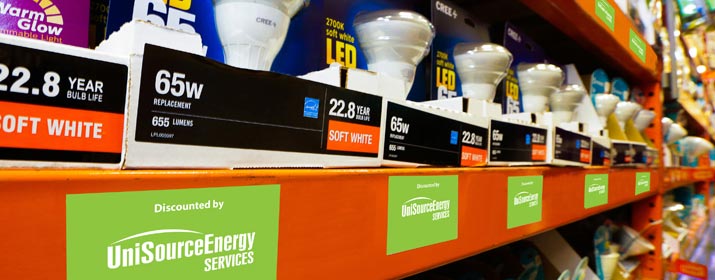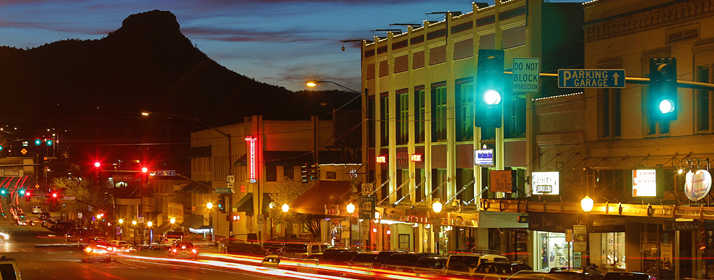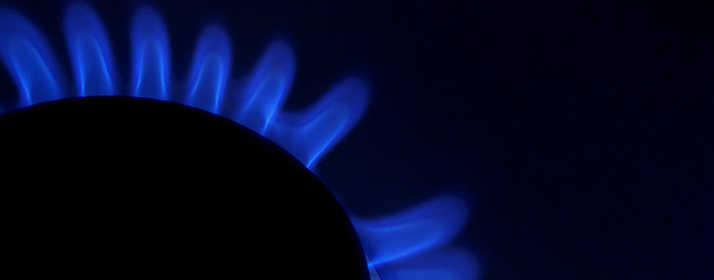
Choosing energy-efficient LED bulbs that are ideal for your lighting needs can be tricky as they now come in a wide variety of styles, colors, brightness and bases.
By swapping out incandescent bulbs with LEDs, you can save an average of $80 in energy costs over the lifetime of the bulb. ENERGY STAR®-qualified LEDs use up to 90 percent less energy and last up to 25 times longer than standard incandescent bulbs.
The price of LED bulbs has dropped dramatically in just a few years with standard A19 bulbs now costing less than $2 each. LED bulbs are available at discounted prices at local stores through UniSource Energy Services’ ENERGY STAR Lighting Program.
Here’s a quick guide to LED bulbs to help you select the right one.
Color
Selecting a bulb that produces the right color of light can make all the difference in the ambience of a room. LED bulb colors range from a soft warm yellow light to a cool blue bright white light.
“The Kelvin (K) rating of an LED indicates the color of light it will produce. Lower Kelvin ratings have a softer, warmer, yellower light. The higher the Kelvin rating, the brighter and whiter the light will be,” said Edith Garcia, Program Manager in Residential Energy Efficiency Programs and Services.
The most common LEDs are 2700K, which produce an inviting warm or soft white color with a yellow hue and most closely replicate the light from incandescent bulbs. This lighting is best for family rooms, living rooms and bedrooms.
LEDs of 4100K and higher that produce a bright blue white light are good for task areas, like offices and kitchens.
Brightness
“When making the switch from incandescent bulbs to LEDs, you’ll want to forget about watts and instead focus on lumens (lm),” Garcia said.
Unlike incandescent bulbs that are rated for brightness by the amount of energy they use (watts), LED brightness is indicated by the lm rating. The higher the lm rating, the brighter the bulb and greater light output. Here are the equivalencies for watts to lumens:
- 150 watts = 2600 lm
- 100 watts = 1600 lm
- 75 watts = 1100 lm
- 60 watts = 800 lm
- 40 watts = 450 lm
Base sizes
When selecting LEDs, make sure you select the right base size for your lighting fixture. Luckily, LEDs are available in almost all base sizes as incandescent bulbs, including 12mm candelabra, 17mm intermediate, 26mm standard and 39mm mogul. Most have the standard Edison screw base.
Smart bulbs
The new smart LED bulbs allow you to be more creative with lighting and have full control and automation of lighting in your home.
Using the manufacturer’s mobile app and your smartphone or your voice-activated smart home assistant, you can change the color of the light output by choosing from millions of hues. You also can turn lights on and off or dim them whether you’re home or away.
But you’ll pay for the extra features of smart bulbs. Costs range from $10 to $80 or more for one smart LED bulb.
Retro filaments
These popular vintage-looking bulbs come in all shapes and sizes and deliver the same high energy efficiency as standard LED bulbs.
“Because these bulbs will last for many years, you need to consider whether the higher price is worth the fashion statement,” said Garcia. “You can always change the bulbs to something different, but you won’t need to for a long time.”
According to the U.S. Energy Information Administration, about 70 percent of homes still use a mix of incandescent and compact fluorescent bulbs.
Garcia advises focusing more on replacing incandescent bulbs than CFLs in your home. “CFLs are still a more efficient option than incandescent bulbs, but for the greatest energy savings, you’ll want to switch to LEDs.”






